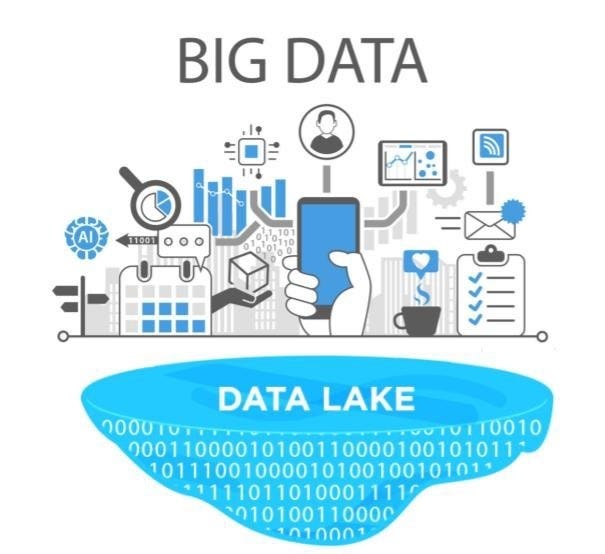Introduction to Data Lake Architecture
Data lakes have emerged as a popular data management solution, providing organizations with a flexible, scalable, and cost-effective way to store and process large volumes of structured and unstructured data. This comprehensive guide will explore the components, benefits, and best practices for implementing data lake architecture, offering a deep understanding of how this technology can be effectively applied in various industries and use cases.
What is a Data Lake?
A data lake is a centralized repository that allows organizations to store all their structured and unstructured data at any scale. Data lakes enable users to analyze this data using various big data processing frameworks and tools, empowering them to derive valuable insights and make informed decisions. Unlike traditional data warehouses, which require data to be pre-processed and structured before storage, data lakes store raw data, offering greater flexibility and agility for organizations dealing with diverse data sources and types.
Components of Data Lake Architecture
A typical data lake architecture consists of several key components, each playing a crucial role in the data storage, processing, and analysis process:
Ingestion Layer: The ingestion layer is responsible for collecting and ingesting data from various sources, such as databases, applications, IoT devices, and social media platforms. This layer may include batch and real-time ingestion mechanisms, depending on the organization’s data processing requirements.
Storage Layer: The storage layer serves as the central repository for storing raw data in its native format. Data lakes commonly utilize distributed storage systems like Hadoop Distributed File System (HDFS) or cloud-based object storage services like Amazon S3, ensuring scalability, cost-effectiveness, and fault tolerance.
Processing Layer: The processing layer is responsible for transforming, cleaning, and enriching the raw data, preparing it for analysis. This layer may employ various big data processing frameworks, such as Apache Spark, Apache Flink, or Apache Hive, to handle the diverse data processing needs of the organization.
Analytics Layer: The analytics layer enables users to query, analyze, and derive insights from the processed data using a variety of analytics tools and technologies, including SQL-based querying engines, machine learning libraries, and data visualization tools.
Security and Governance Layer: This layer ensures data security, privacy, and compliance by implementing access controls, data encryption, data lineage tracking, and auditing mechanisms.
Benefits of Data Lake Architecture
Data lake architecture offers several benefits for organizations, including:
Scalability: Data lakes are highly scalable, enabling organizations to store and process massive volumes of data without constraints.
Flexibility: Data lakes store data in its raw, native format, allowing organizations to ingest and process diverse data types, including structured, semi-structured, and unstructured data.
Cost-Effectiveness: Data lakes can leverage distributed storage systems and cloud-based object storage services, resulting in a cost-effective storage solution that can be easily scaled as needed.
Agility: Data lakes support a wide range of analytics tools and technologies, empowering organizations to quickly adapt to changing business needs and leverage new analytics capabilities.
Data Discovery and Exploration: By storing raw data, data lakes enable organizations to discover new insights and explore previously untapped data sources, driving innovation and informed decision-making.
Best Practices for Implementing Data Lake Architecture
When implementing data lake architecture, consider the following best practices:
Define Clear Objectives: Start by establishing clear objectives and goals for your data lake, ensuring that it aligns with your organization’s overall data strategy and business objectives.
Establish Data Governance Policies: Implement data governance policies and processes to ensure data quality, consistency, and compliance throughout the data lake lifecycle. This includes defining data lineage, cataloging, and metadata management practices.
Ensure Data Security and Privacy: Implement robust data security measures, such as access controls, data encryption, and auditing mechanisms, to protect sensitive information and ensure compliance with relevant data privacy regulations.
Choose the Right Storage and Processing Technologies: Select the appropriate storage and processing technologies that align with your organization’s data requirements, infrastructure, and budget. Consider factors such as scalability, performance, and cost-effectiveness when making your decision.
Optimize Data Ingestion and Processing: Design and implement efficient data ingestion and processing pipelines, ensuring that your data lake can handle both batch and real-time data processing as needed.
Leverage the Power of Analytics: Empower your users to analyze and derive insights from the data stored in your data lake by providing them with the necessary tools, technologies, and training.
Monitor and Optimize Performance: Regularly monitor the performance of your data lake and optimize its components to ensure that it continues to meet your organization’s evolving data needs and requirements.
Plan for Growth: Design your data lake architecture with future growth in mind, ensuring that it can be easily scaled and adapted to accommodate increasing data volumes, new data sources, and changing business needs.
Conclusion
Data lake architecture offers a powerful and flexible solution for organizations looking to harness the full potential of their data assets. By understanding the key components, benefits, and best practices for implementing data lake architecture, organizations can effectively apply this technology to their specific industries and use cases, ultimately driving better business outcomes. Implementing a data lake requires careful planning, a clear understanding of your organization’s data requirements, and a commitment to data governance, security, and performance optimization. By following these best practices, you can ensure that your data lake remains a valuable and effective tool for driving data-driven decision-making and innovation within your organization.
